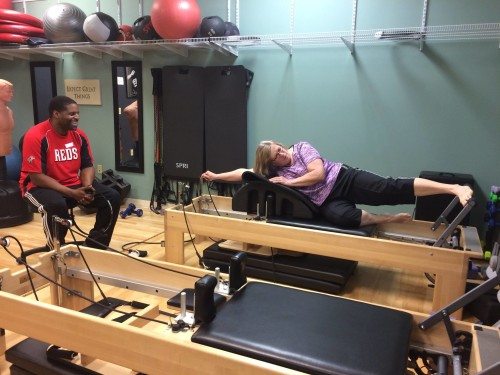The trend seems to be that we take how our body functions for granted until we get much older. With over 600 muscles, 206 bones, 22 internal organs, and 100 trillion cells, there is a lot going on inside of us simultaneously. Inevitably, we reach a point in our life where something goes wrong, we tear a ligament, break a bone, fall, or become ill. We realize then, what we actually knew all along, that we are human after all and normal “wear and tear” do occur. One area that is often misunderstood and under-appreciated is our pelvic floor. Pelvic floor disorders typically occur when we get much older. It’s something that we also take for granted, too. For the pelvic floor are the muscles that hold our pelvic organs in place and keep them functioning as they should, which is what we really want after all.
The pelvic floor muscles run from your pubic bone in the front to the base of your spine in the back. As you get older, these muscles can get weaker, especially for women who have had children. These weakened muscles can cause problems that interfere with living your life. Problems such as urinary incontinence, which is the inability to hold all the urine in so a person experiences leakage; reduced sensitivity during sex; and the risk of developing pelvic organ prolapse, which occurs when one or more of the pelvic organs bulge into an area it doesn’t belong. Strong pelvic floor muscles also assist with preventing lower back pain, inflammation, and instability or dysfunction.
Both men and women can prevent the weakening of our pelvic floor muscles through awareness and targeted exercises. The good news is that strengthening this area requires minimal effort. There are two actions – squeeze and lift. First squeeze your pelvic floor as you would to hold a full bladder and then lift it at the same time and hold for 5 to 10 seconds. This is called activating your pelvic floor. Doing this throughout your day will gradually strengthen this area of your body.
Pilates is another way to strengthen your pelvic floor and prevent disorders. This form of exercise is highly effective at reducing lower back pain and strengthening the pelvic floor. Be proactive with your health. Don’t wait until you experience the symptoms of a pelvic floor disorder. Staying on the offense will keep you living the life you want.











 3187 Western Row Road Suite 114
3187 Western Row Road Suite 114 Office:
Office:  Email:
Email: